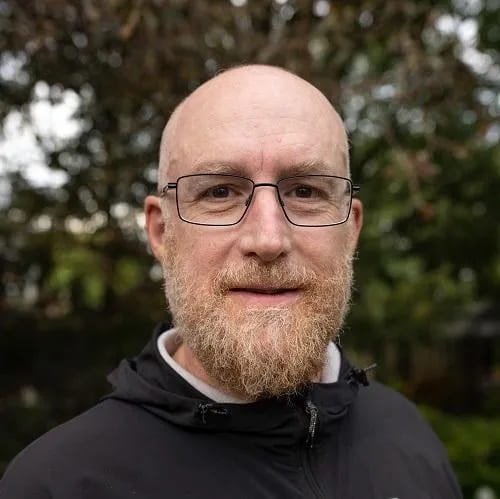
Using conversations and storytelling to create understanding of environmental issues in Indigenous communities
By: Marilyn Sheen
Dr. Tad McIlwraith is a cultural anthropologist who uses storytelling as the medium for his research. Much like the ebbs and flows of a story told through the generations, McIlwraith’s current research project is about things that flow – water, wind, and air.
McIlwraith is a community-based researcher who follows Indigenous-based methodologies. He turns community interests into research projects that look at different elements of the environment and how we can live within it in respectful ways. Once the agenda is set by the community, Dr. McIlwraith colours the conversations with his skills and background knowledge.
“These projects are the community’s projects,” says McIlwraith, “I get invitations to the conversations, but my job is to support their initiatives.”
Environmental conditions and relations in the Splatsin Nation are currently McIlwraith’s central focus. The community, located in southern British Columbia, identified a need for research on water and water quality, so McIlwraith wrote an application to do a collaborative, community-driven project related to water. The project broadened to encompass air quality issues, as floods and smoke from forest fires have greatly impacted the Splatsin Nation and other communities across Canada.
In the summer, a symposium will take place in the community, where participants will have the opportunity to be on the land, and talk about water and water quality issues, and the protection of the Shuswap River that run through Splatsin territory.

McIlwraith’s research diverges into producing literature to help researchers and policy makers improve their communication with communities, and to provide communities with the tools to express the need to protect their lands, livelihoods, and cultures, to policy makers.
Understanding the relationships between the environment, animals, and humans, has always been central to McIlwraith’s research. McIlwraith says he appreciates that the One Health perspective forces us to be articulate about the relationship between humans and animals, but he has spent years trying to dismantle his own thought patterns that classify humans and animals as separate entities.
“The leaders that I work with in communities are constantly telling me to stop looking at things in isolation. To look at things in relation to each other – the people the land the animals. And not only the physical expressions of things, the mental, emotional, and spiritual expressions – the four quadrants of the Indigenous medicine wheel.”
So, in McIlwraith’s research, he incorporates fluidity between the human-animal-environment triad – and he wants to incorporate this perspective into the One Health program, to help students see the power that exists in relationships.



